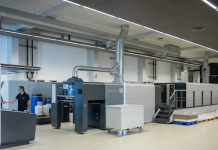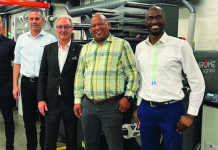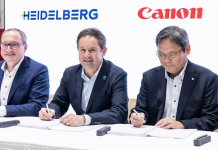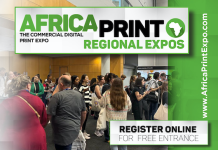Millennials require customisation, want to stand out and want prints done yesterday. According to Richard Gray from Print Tribe, 'Millennials are a huge and increasingly influential generation in economic terms. They use digital media more than older generations but still want to use print; but only as part of a multichannel communications process.' We get advice from suppliers on technologies that will help print shops maximise printing for this market. This article appears in the Africa Print Journal.
Ryan Miles, managing director, Heidelberg Graphic Systems Southern Africa
1. Millennials are known to be 'glued to their phones'. Is this market still interested in print?
Absolutely. Electronic media has given not only Millennials, but all generations, the ability to stay in touch through multiple forms of media, whether personal, general areas of interest, or commercial, from multiple sources, in real time. This information is usually delivered electronically en masse in small snippets. But there’s no doubt that printed material creates a different reaction and triggers an individual in a unique manner. Therefore, in highly competitive markets, one needs to connect to your market using all tools available to achieve the best results.
2. What expectations do millennials have for printed products?
We are used to having things at our fingertips. Take music as a simple example of instant gratification: now one can download a song right after hearing it on the radio. We can apply this to print. The average age of print buyers has decreased, with buyers in their mid-twenties expecting results immediately, because they are getting that instant gratification in other forms of technology. The advance in technology available to printers has allowed for the meeting of these demands, as well as to cater for new trends, such as personalisation and differentiation. Millennials want to stand out, be unique, and they want to use print as one of the tools to achieve this.
3. According to an Infotrends report, print/marketing providers must offer a multichannel experience to succeed. Do you agree with this and what would this entail for printers?
A multichannel experience is expected to be the norm in the near future. The more interactive we can make a personal experience, in a way that is acknowledged professionally, the more it will suit Millennials’ needs. In order for print marketing providers to cater for this they have to understand these needs and make use of available technology to achieve this and to stay relevant.
4. Which solutions does Heidelberg provide to meet the demands of this market?
Apart from numerous typical solutions that Heidelberg can provide, which include personalisation, push to stop, web to print and creative design tools, our unique combination of highly automated equipment across various printing methods (litho, digital, 4D), together with our broad Prinect workflow solutions and exciting digital platforms, create an environment where printers can meet the needs of their market in a modern, digitised, efficient and creative way.
—————————————
Kemtek Imaging Systems
1. What expectations do Millennials have for printed products?
Consumers, particularly Millennials, demand customisation. They are 'The way I want it' generation and sustainability is very important to them. They are conscious about their impact on the environment. Tamir Hativa, Product manager at HP, said, 'The number one trend across all markets is that you have to be more relevant to stay relevant. You can do this by offering something personal and unique, like customised magazines, personalised packaging and books and more.'
2. According to an Infotrends report, print/marketing providers must offer a multichannel experience to succeed. Do you agree with this and what would this entail for printers?
'Yes, certainly. Whether PSPs are dealing with small brands or huge conglomerates, Multi-Channel Marketing provides unheralded opportunities for these brands to reach and interact with customers, and build brand loyalty and trust,’ commented Karen Stretch, Kemtek Marketing manager. ‘Managed effectively and consistently, it can grow a business from strength to strength. If not used, or not used well, it could mean losing ground that may then be difficult, if not impossible, to regain. For PSPs, staying relevant and providing a multi-faceted print solution is a must.’
3. Which solutions does Kemtek provide to meet the demands of this market?
Consumers are placing increasing demands on the PSP, with higher quality requirements, shorter runs, more versatility and flexibility. HP Indigo helps PSP's meet these demands by providing differentiation and customisation, allowing printers to execute a variety of go-to-market promotions that are large scale or even regional.
Printers are seeing the benefits of digital printing, such as speed, which allows for targeted campaigns and 'real time' packaging that allows products to go from design to shelf overnight. Another benefit is unique, customised packaging that stands out and gets brands noticed – key to targeting Millennials.
A famous example of HP technology helping brands to stand out is the Diet Coke campaign, where HP Indigo technology and SmartStream Mosaic software were used to create two million unique bottles. This attracted a younger audience to the brand and generated major brand awareness on social media. For a recent Amarula campaign, a special edition of 400,000 unique Amarula bottles, representing the same remaining number of the endangered African elephant, was released with labels individualised by HP Indigo digital print and HP SmartStream Mosaic variable design technology.





















